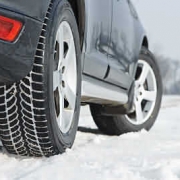Driving in Winter
Table of Contents
Driving in Winter

Driving in Winter
Most people understand that driving in snow can be a little tricky. However, the danger hasn’t always passed once the snow has begun to melt. It’s also risky to drive in slush, the combination of melting snow, water, ice salt, and other debris that commonly develops on roads in late winter.
It can also develop at times when temperatures are just above freezing
but ice salt is melting any snow that lands on the ground. This can cause problems for pedestrians as well. If you’re a property owner, be sure to clear any slush from the sidewalk to avoid slip-and-fall accidents. This is a relatively quick job and can help you avoid being contacted by a personal injury lawyer.
Cleaning slush off the road is not as simple as cleaning it off the sidewalk, though. Read on to learn how to safely operate your vehicle even while the road is full of slush.
How to Safely Drive on Slush. Driving in Winter
Driving on slush is difficult because it allows for very little traction. Additionally, slush tends to accumulate in mounds or piles. This makes the surface very slippery for tires traveling over it. Tyres that turn against slush mounds are often met with a stronger-than-expected obstruction, which creates a side force.
This makes changing lanes particularly difficult. When the wheels meet the slush, it creates a braking effect in the front of the vehicle. Combined with little to no traction in the rear tires, as well as the turning movement which has already begun, the car may continue to turn. This could cause a driver to lose control of the vehicle.
That doesn’t have to happen. To make sure you don’t spin out when driving in slush, keep the following tips in mind: Driving in Winter
- Never change lanes over slush mounds unless you genuinely have no other option.
- Make a point of planning lane changes ahead of time so you can perform them in areas without slush.
- When you are changing lanes or turning, do so gradually. This ensures the vehicle’s angle of approach is shallow. As a result, less force is exerted on the tyres.
- Grip the steering wheel firmly but loosely in order to maintain control of the vehicle if you do run into slush.
- Exert a consistent amount of pressure on the accelerator. You want to maintain a relatively consistent speed in order to prevent a sudden braking or accelerating force.
All this said, the best way to avoid being involved in an accident is to avoid driving in slushy conditions whenever possible. However, there may be instances when it is necessary to get behind the wheel despite the presence of slush on the roads.
Pellon Tyres is now a member of Tyresafe.org, promoting tyre safety locally
In these cases, remember that “slow and steady” is key to making safe lane changes. You also need to maintain a safe distance between yourself and other vehicles, as it can be difficult to brake in slush. By remembering these points, you’ll be much safer out on the road all winter.

